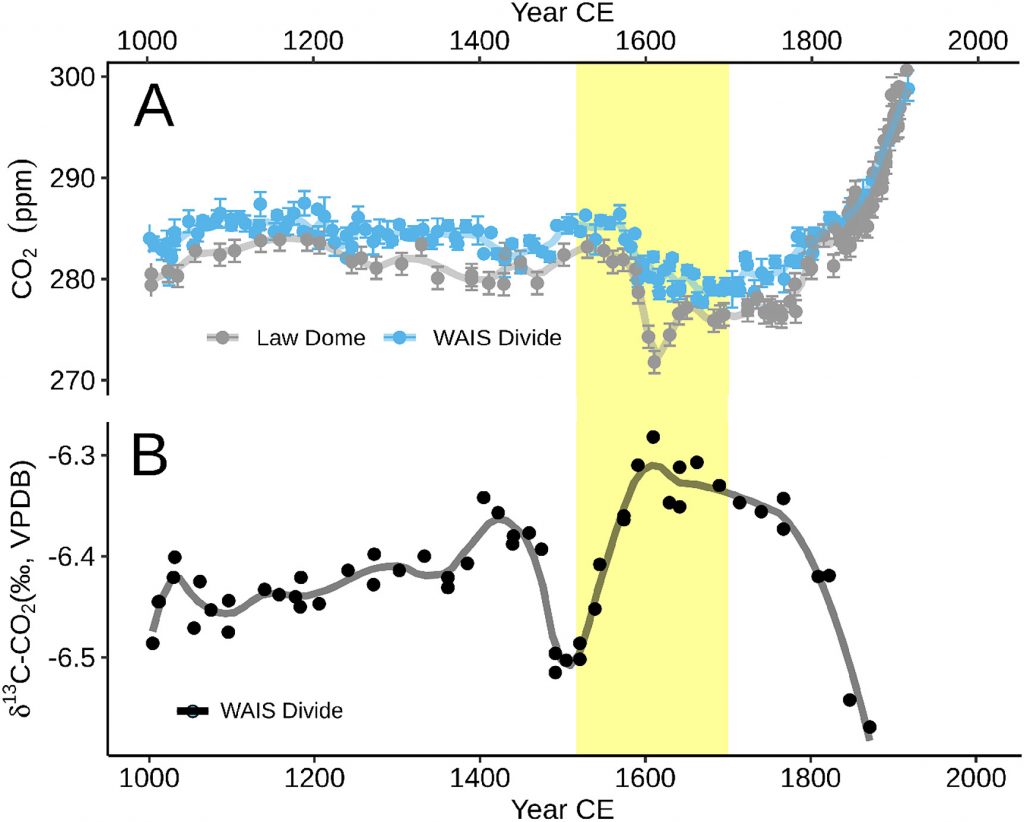Human impacts prior to the Industrial Revolution are not well constrained. We investigate whether the decline in global atmospheric CO2 concentration by 7–10 ppm in the late 1500s and early 1600s which globally lowered surface air temperatures by 0.15∘C, were generated by natural forcing or were a result of the large-scale depopulation of the Americas after European arrival, subsequent land use change and secondary succession. We quantitatively review the evidence for (i) the pre-Columbian population size, (ii) their per capita land use, (iii) the post-1492 population loss, (iv) the resulting carbon uptake of the abandoned anthropogenic landscapes, and then compare these to potential natural drivers of global carbon declines of 7–10 ppm.
Earth system impacts of the European arrival and Great Dying in the Americas after 1492

